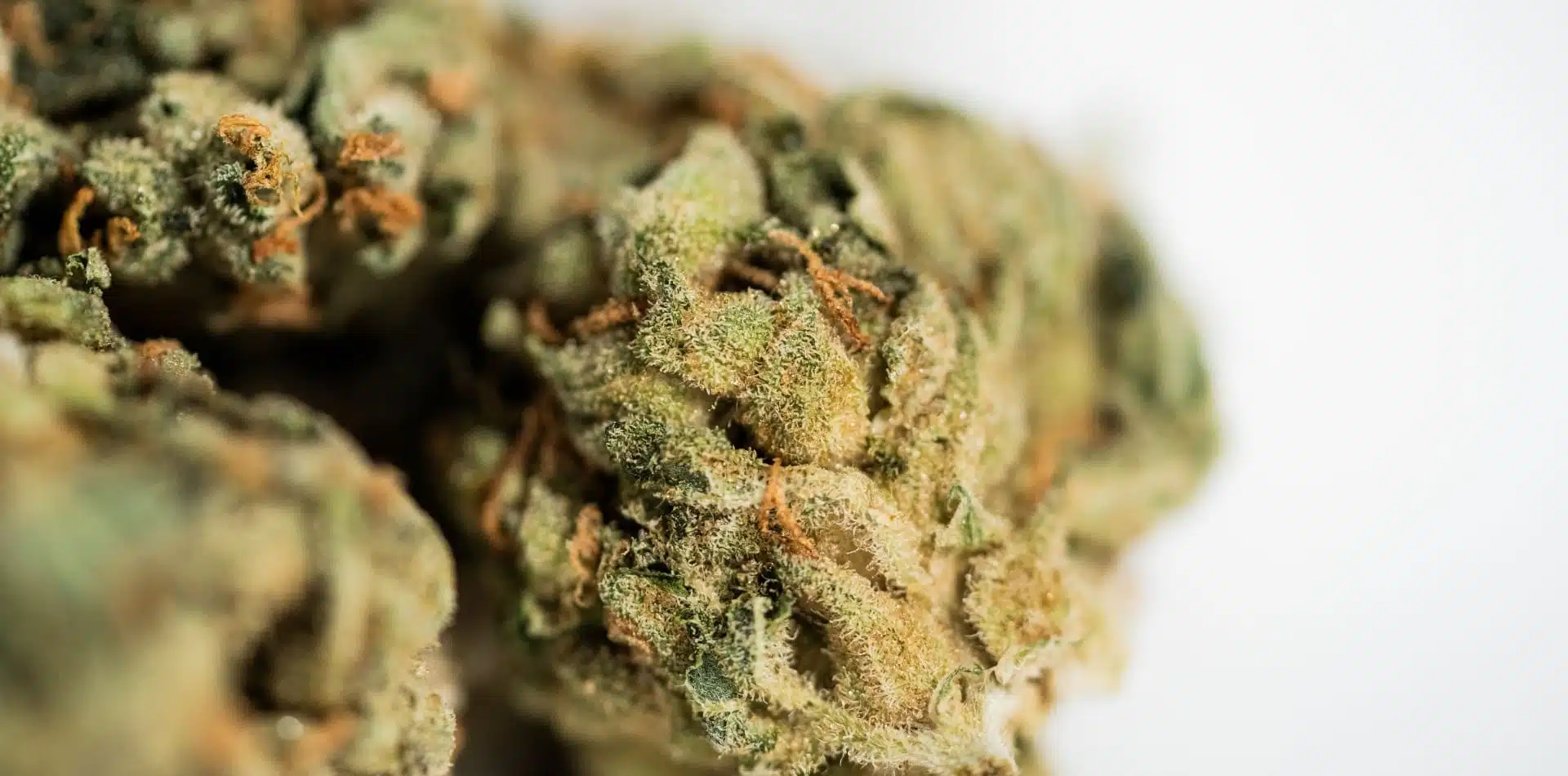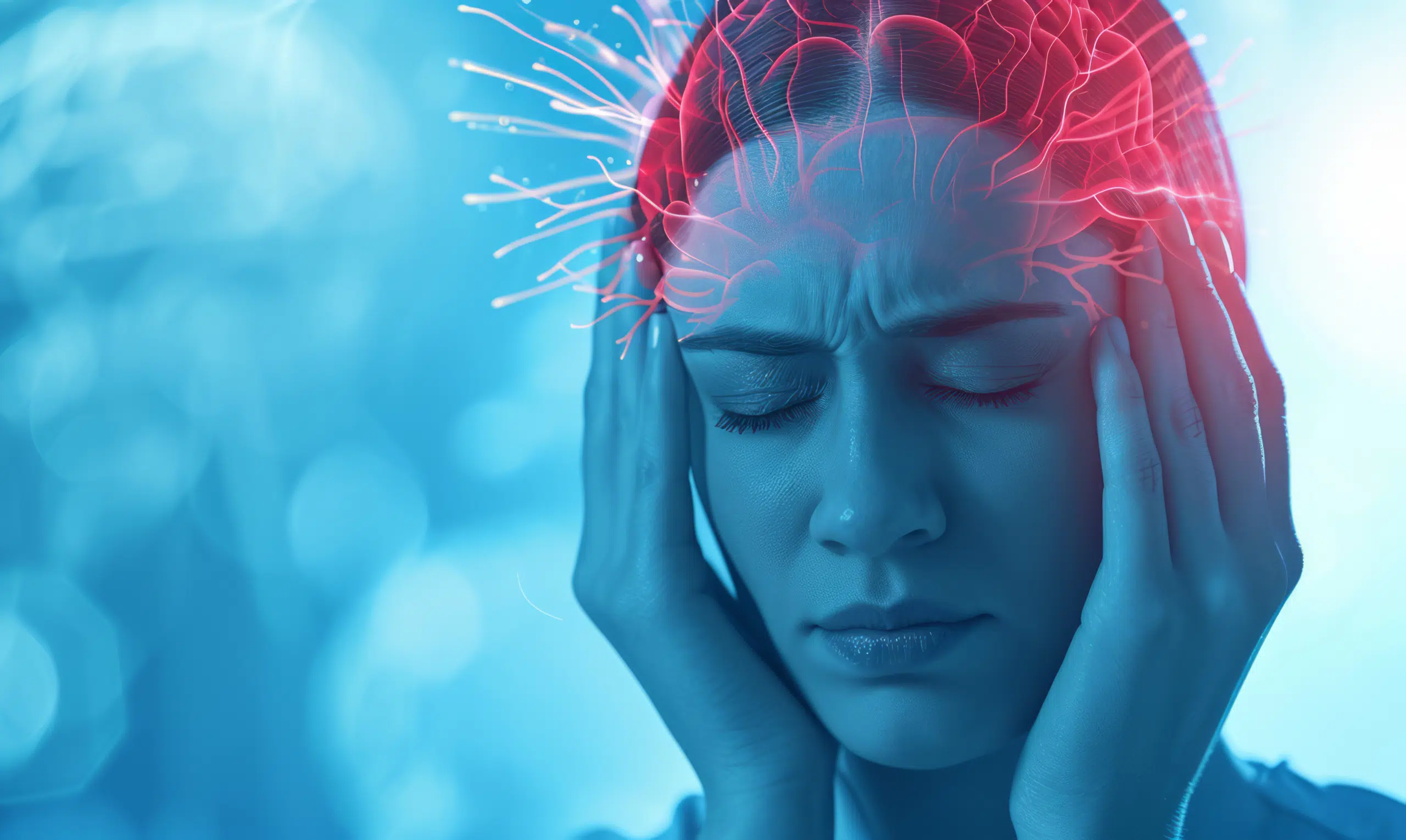Share
Enhancing Quality of Life: Medical Cannabis for Seniors

Enhancing Quality of Life: Medical Cannabis for Seniors
Factors such as legalization, shifting perceptions, and demographic changes have led to an increase in cannabis use among older adults, underscoring the need to comprehend its impact on healthcare applications. While many seniors turn to medical cannabis for perceived therapeutic benefits, research suggests it may effectively treat conditions like pain, nausea, spasticity, and sleep disturbances. However, cannabis use also carries potential adverse effects, leading to increased healthcare utilization, including emergency visits and hospitalizations, particularly among medical users.
Analyzing data from the National Survey on Drug Use and Health (2015–2019), researchers explored the association between cannabis use and healthcare utilization in adults aged 50 and older. They found that past-year cannabis users had higher rates of emergency visits and hospitalizations, but after adjustments, these rates didn’t significantly differ from non-users. Medical-only users had more ED visits than nonmedical-only users, highlighting the impact of medical cannabis on healthcare utilization.
These findings emphasize the need to address the healthcare needs of older cannabis users. Healthcare providers must understand the implications of cannabis use, educate patients on its risks and benefits, and provide preventive healthcare measures. Specialized behavioral health services may be necessary, especially for those with co-occurring mental health conditions. To explore the long-term effects of cannabis use on healthcare outcomes and develop targeted interventions for older adults, further research is needed. Overall, medical cannabis holds promise for addressing common health concerns among seniors and improving their quality of life when used under appropriate guidance.
Cannabis treatment for various symptoms in older adults
The use of medical cannabis in older adults presents a promising yet complex therapeutic option for symptoms such as chronic pain and sleep difficulties, especially when conventional therapies fall short. Nevertheless, the current lack of robust evidence regarding its efficacy and safety in this demographic needs a careful approach. The study “Pragmatic treatment protocol for medical cannabis in older adults was implemented” tracked outcomes over six months, prospectively following consecutive patients above 65 years of age from April 2017 to October 2018. Among 184 patients aged 65 and above, treatment adherence was favorable, with 58.1% continuing cannabis use at the study’s end. Adverse events, predominantly dizziness and sleepiness/fatigue, were reported by 33.6% of patients.
The rise in medical cannabis usage is notable worldwide, with regulations varying across countries, shaping medical practice. Despite public optimism about cannabis’s therapeutic potential, the evidence in the medical literature lags. Contrary to popular belief, older adults increasingly turn to medical cannabis, with usage rates ranging from 7% to over a third in different countries, and recreational use among older adults is rising, particularly in the United States.
Geriatric medicine aims to alleviate suffering and improve quality of life, addressing common issues like chronic pain, Parkinson’s disease, depression, sleep disorders, and malnutrition. Conventional treatments for these conditions often pose serious health risks, prompting reevaluation, especially given concerns over opioid-related deaths. However, evidence of medical cannabis’s efficacy in older adults remains scarce.
While cannabis shows promise in managing symptoms like chronic pain, Parkinson’s disease, and sleep difficulties, conclusive evidence is lacking. For instance, while it may aid in improving the quality of life in Parkinson’s disease, studies on its effectiveness in treating motor symptoms yield mixed results. Similarly, while some evidence suggests cannabis may help with sleep disorders, its impact on the sleep-wake cycle remains uncertain.
Research on the potential therapeutic effects of cannabis in older adults for conditions like nausea, post-traumatic stress disorder, and dementia is sparse.
Furthermore, its use in palliative care requires a more comprehensive investigation to draw meaningful conclusions. Given these gaps in knowledge, cautious consideration and further research are necessary to determine the appropriateness and effectiveness of medical cannabis in older adult populations.

Pain Management in Seniors
Cannabis has a long history of medicinal use, dating back thousands of years. Its therapeutic properties are attributed to two major cannabinoids: tetrahydrocannabinol (THC) and cannabidiol (CBD). These compounds interact with the endocannabinoid system, modulating various physiological functions, including pain perception. Different strains of cannabis contain varying ratios of THC to CBD, influencing their clinical effects. While THC exhibits psychoactive properties, CBD is non-intoxicating and may counteract some of THC’s effects.
Neuropathic pain
Neuropathic pain, which is often challenging to manage with conventional treatments, arises from nerve damage or dysfunction. Research suggests that cannabinoids, the active compounds in cannabis, may modulate pain signaling pathways in the nervous system, offering relief from neuropathic pain. Studies have reported that cannabis-based medications can increase the number of patients experiencing significant pain relief, especially in neuropathic pain conditions.
Musculoskeletal pain
Musculoskeletal pain, including conditions like fibromyalgia and chronic back pain, can be persistent and challenging to manage. Medical cannabis offers an alternative approach to pain management for individuals with musculoskeletal pain. Cannabinoids interact with the body’s endocannabinoid system, which plays a role in regulating pain perception and inflammation. By modulating this system, cannabis-based treatments may provide relief from musculoskeletal pain, enhancing overall comfort and function.
Arthritis
Arthritis, a common chronic condition characterized by joint inflammation and stiffness, can be debilitating and significantly impact quality of life. Medical cannabis has shown promise in reducing inflammation and arthritis pain. Cannabinoids possess anti-inflammatory properties that may help alleviate joint pain and improve mobility in individuals with arthritis. Moreover, some patients report subjective relief from arthritis symptoms with cannabis-based treatments.
While medical cannabinoids show promise in managing pain and other symptoms in older adults, the existing evidence is limited and heterogeneous. Further high-quality research is needed to have a deeper comprehension of the benefits and risks of cannabinoid therapy in older patients. Geriatricians should remain cautious when considering cannabinoid therapy for older adults, considering individual patient characteristics and potential drug interactions.
Optimizing sleep health: Leveraging medical cannabis for better sleep
Sleep plays a crucial role in daily functioning, yet many adults face challenges in achieving adequate rest. Common disorders like insomnia affect up to 30% of the population and are associated with various negative outcomes, including cognitive deficits, mental health issues like depression and anxiety, and an increased risk of medical conditions and mortality.
Cannabis is often considered a potential remedy for sleep problems, although findings regarding its efficacy are inconsistent. While acute cannabis use may initially improve sleep, chronic usage has been linked with sleep disturbances. Cannabinoids like THC and CBD are key players, with high-dose CBD and low-dose THC showing promise for sleep therapy. However, chronic use of high THC or low CBD concentrations may lead to sleep deficits and tolerance development, offsetting any positive effects.
Studies indicate that daily cannabis users often report insomnia symptoms and poorer sleep quality compared to intermittent or non-users. This may be exacerbated by the public perception of cannabis as a sleep aid, leading to increased use and potential long-term sleep issues and overall well-being.
Sleep disturbances frequently coexist with other conditions, such as pain, where cannabis may serve a palliative role as part of a comprehensive treatment strategy. Efforts are underway to discourage the use of common hypnotic sleep medications due to the associated adverse outcomes, especially in older adults.
While the risks versus benefits of cannabis products for treating sleep disturbances are less clear, they could potentially offer a more favorable risk/benefit profile compared to chronic hypnotic therapy. Future research may explore if combining medicinal cannabis with cognitive behavioral therapy for insomnia (CBT-i) results in a lower risk of adverse events compared to hypnotics alone.
Some literature suggests that THC may alleviate symptoms of sleep disturbance associated with sleep apnea, a prevalent sleep disorder. Cannabis could be considered a harm-reduction tool for managing sleep disturbance in this population, given the discouraged use of hypnotics in individuals with sleep apnea.
Briefly , as cannabis use continues to rise among older adults, more research is needed to determine optimal dosing and administration methods for various sleep disorders, tailored treatment strategies, and potential interactions with concurrent medications and comorbidities. Establishing guidelines for cannabis use in treating sleep disturbances will be essential for enhancing older patients’ sleep health and overall quality of life.

Unraveling the mental health benefits of medical cannabis in older adults
With the legalization of cannabis, both for medicinal and recreational purposes, there’s been a surge of interest in its impact on mental health, especially among older demographics. In Canada, where cannabis is now legal, seniors are increasingly turning to cannabis, often for medicinal reasons. However, concerns linger due to the heightened vulnerability of older adults to adverse drug events compared to younger individuals.
To comprehend cannabis’s effects, it’s essential to grasp its key components. The primary compounds under study are Δ9-tetrahydro-cannabinol (Δd9-THC), responsible for inducing psychoactive effects, and cannabidiol (CBD), known for its potential therapeutic benefits without causing psychoactivity. These compounds interact with the body’s endocannabinoid system.
While research suggests that medical cannabis may alleviate symptoms of conditions like chemotherapy-induced nausea and vomiting, multiple sclerosis, and glaucoma, its efficacy in psychiatric disorders such as PTSD, anxiety, and schizophrenia remains uncertain. Moreover, findings from studies may not directly apply to older adults due to age-related changes in drug metabolism.
Delving into mental health associations, studies reveal that older adults who use cannabis are more prone to mental health disorders like depression, anxiety, bipolar disorder, and suicidal thoughts compared to non-users. Additionally, personality and substance use disorders are more prevalent in this group, with concurrent cannabis and alcohol use raising concerns about compounded effects.
When considering medical cannabis use in older adults, low-dose consumption generally appears well-tolerated, with few reports of serious adverse effects. Nevertheless, caution is advised due to the rare instances of confusion, hallucinations, and psychosis linked to cannabis use, particularly among older populations.
Chronic conditions: The role of medical cannabis
The study “Patterns of Medical Cannabis Use Among Older Adults from a Cannabis Dispensary in New York State” revealed that over a quarter of patients were aged 65 or older, with more than a third falling between the ages of 50 and 64. These findings mirror broader societal shifts over the past decade, indicating a significant increase in cannabis use among older demographics, particularly in states like New York that have passed legislation easing cannabis access.
While severe or chronic pain and muscle spasms were common symptoms leading to cannabis certification across all age groups, there were notable differences among age cohorts in other aspects. Older adults showed a higher likelihood of being repeat patients, suggesting potential ongoing benefits or effectiveness of cannabis products, prompting repeat purchases. The prevalence of chronic conditions such as cancer and Parkinson’s disease among older patients underscores the palliative potential of cannabis for managing these ailments.
Middle-aged and older adults exhibited a greater preference for using tinctures compared to their younger counterparts. This preference may be attributed to the reduced stigma associated with this consumption method or specific recommendations from the dispensary or healthcare providers. Practical considerations, such as challenges with other delivery methods like vaporization cartridges, may also contribute to this preference, particularly among older adults or those with functional limitations.
Furthermore, the study shed light on the differential risk and benefit profiles of key cannabinoids in medical cannabis—THC and CBD. Older adults, potentially more sensitive to THC’s intoxicating effects, tended to favor products with lower THC concentrations initially. However, as they became more accustomed to cannabis, there was a similar inclination towards higher THC doses over time, suggesting a possible trend towards increased uptake and dose escalation of THC products among older adults in the future.
Considerations for seniors: Dosing and side effects
Special considerations arise when considering the use of medical cannabis among older adults, particularly regarding potential drug interactions, affordability concerns, challenges in reading packaging labels, and dosing variability across states and dispensaries. Older adults, especially those unfamiliar with cannabis, may face higher risks of inaccurate administration and adverse effects, necessitating additional education and caution from healthcare providers. Furthermore, older adults are at heightened risk of conditions such as heart attacks from smoking cannabis due to underlying health issues like coronary artery disease. Dispensary staff may not always be adequately equipped to address the unique needs of older adults, leading to instances of inappropriate dosing and adverse reactions.
As the aging population grows, an interdisciplinary approach to care is essential in addressing the specific needs and considerations of older adults regarding medical cannabis use. Healthcare professionals must stay informed about new evidence and collaborate to establish standardized approaches for assessing needs, ensuring safe usage, and offering appropriate program options for older adult patients.
Conclusion
Medical cannabis holds promise for improving the health and well-being of older patients facing various conditions. It offers a safer alternative to traditional pain medications, reducing the risks of opioid dependency and adverse effects while providing relief from neuropathy and arthritis pain. Medical cannabis also shows potential for addressing sleep disturbances by promoting better sleep quality and enhancing cognitive function and mood.
Moreover, medical cannabis may support mental health in seniors by relieving anxiety, depression, and stress through its anxiolytic and mood-stabilizing effects, leading to improved emotional well-being and overall quality of life. Additionally, it can help manage chronic conditions like arthritis and Parkinson’s disease by alleviating symptoms such as pain, inflammation, and nausea.
Healthcare providers should consider medical cannabis as a viable treatment option for seniors, educate themselves on its benefits and risks, and engage in open discussions with patients to make informed decisions. Further research is necessary to deepen our understanding of medical cannabis’s efficacy, safety profile, and optimal use in older patients. Healthcare providers can provide compassionate care, alleviate suffering, and enhance vitality by harnessing its therapeutic potential, offering hope for a healthier future for seniors.
Sources:
Vacaflor BE, et al. Mental Health and Cognition in Older Cannabis Users: a Review. Can Geriatr J. 2020 Sep 1;23(3):242-249. doi: 10.5770/cgj.23.399.
Kaufmann CN, et al. Patterns of Medical Cannabis Use Among Older Adults from a Cannabis Dispensary in New York State. Cannabis and Cannabinoid Res. 2022;7: 224–230. doi: 10.1089/can.2020.0064.
Choi NG, et al. Mental health treatment use among cannabis users aged 50+: Associations with cannabis use characteristics. Drug Alcohol Depend. 2021;223: 108705. doi: 10.1016/j.drugalcdep.2021.108705.
Medical Cannabis Use in Older Adults. ABA Groups, Voice of Experience Archives. https://www.americanbar.org/groups/senior_lawyers/resources/voice-of-experience/2010-2022/medical-cannabis-use-older-adults/ (accessed 9 May2024).
Winiger EA, et al. Cannabis use and sleep: Expectations, outcomes, and the role of age. Addictive Behaviors. 2021; 112: 106642. doi: 10.1016/j.addbeh.2020.106642.
Beedham W, et al. Cannabinoids in the Older Person: A Literature Review. Geriatrics. 2020; 5(1):2. doi: 10.3390/geriatrics5010002.
Minerbi A, et al. Medical Cannabis for Older Patients. Drugs Aging. 2018; 36: 39–51. doi: 10.1007/s40266-018-0616-5.
Abuhasira R, et al. Medical Cannabis for Older Patients—Treatment Protocol and Initial Results. J Clin Med. 2019; 8(11):1819. doi: 10.3390/jcm8111819.












